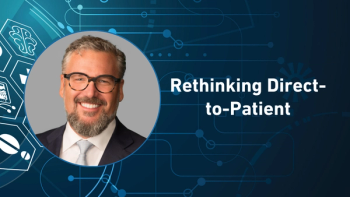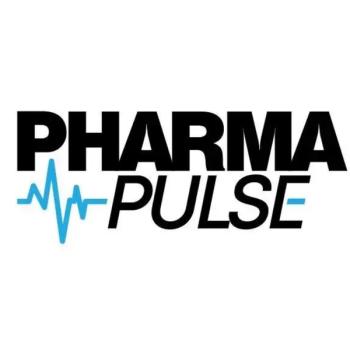
- Pharmaceutical Commerce - March 2021
- Volume 16
- Issue 1
Keeping the message moving during Covid
A conversation with Cathy Traz, global advocacy head at Bristol Myers Squibb
The Covid-19 pandemic has been particularly tough on patient advocacy and support organizations—groups traditionally accustomed to zigzagging to industry events and medical congresses to share and collect the latest disease information on the communities they serve, and where expert advocates are often patients themselves. Immunocompromised as it is, Covid has bolted the doors shut on such activities, as these patients, and their caregivers, simply can’t afford to risk exposure.
Filling the void hasn’t been easy, but many are doing their part, including pharma. One such example is the Covid Advocacy Exchange (CAE), a partnership between Bristol Myers Squibb and GRYT Health that, via a virtual platform, brings together advocacy groups, patients and industry leaders to synchronize efforts, facilitate resource sharing and boost collaboration. First launched in May 2020, the CAE, according to Cathy Trzaskawka (Traz), executive director and head, global advocacy, BMS, has attracted 25,000 visitors form 90 countries to participate in live sessions, workshops, working group discussions and other programs.
“Just a place to go to say, okay, we’re all in the same boat, let’s talk about what’s happening,” says Traz, whose team of 20 acts as a “resource hub” for BMS’s wider advocacy needs. In making the CAE work (“we certainly wouldn’t keep doing it, if it wasn’t helpful”), Traz credits the combined efforts of the advocates, GRYT Health and BMS, the latter attributing especially to the direction of colleague Jodi Hutchison-Sanford.
Pharmaceutical Commerce caught up with Traz to discuss the importance of keeping patient advocacy members engaged and informed during the pandemic and how a passion for health policy and volunteer work vaulted her to a career in advocacy.
1. How has the CAE been able to navigate around the Covid-driven limitations and still be effective in sharing and exchanging information?
We always met pretty regularly with our organizations, and we’ve had to just change them over to virtual. We continue to try and be really communicative with them, sending out any updates from our teams, any information that we have that are patient- and resource-helpful, or other [outside] meetings that we might know about that might be helpful for them.
2. Obviously a big challenge and task for pharmas such as BMS has been responding to the needs of the global advocacy community during Covid. At this stage, how has the industry done in your estimation?
The industry as a whole, with the vaccines, I think that’s been an amazing, amazing feat. And so many different people working together across not just industry but other sectors and really pulling together for this unbelievable need.
For BMS, in particular, we introduced many different initiatives to try and help—between donations of supplies or allowing for people that lost their jobs to still get our medications for free. But for the advocates, in particular, I have to say, they were really struggling, because as soon as [the pandemic] hit and travel stopped, they weren’t able to get to these meetings, and people weren’t able to connect and work together in our typical fashion.
Leadership came to us and said, “what could we do to help during this time besides the other resources that we had sent out?” We said what would be great is if we had a networking opportunity that was kind of an online forum, 24/7, across diseases—so that everyone can talk together.
We partnered with GRYT Health the year before for the Global Virtual Cancer Conference (hosted by BMS). I said, hey, these guys have a platform. I wonder if they would be interested in partnering to pull something like this together, and then working with the advocates to build it out?
As soon as I called Dave Fuehrer, CEO of GRYT Health, he said yes, without hesitation. And then we laughed because we thought, oh my gosh, now we actually have to pull this off and do it! I think, though, when you have the passion and when you know there’s a need, you just continue to drive to figure it out. Because they had the platform, we knew we had the resources to support it, but we wanted it to be built and co-created with the advocates.
From our advocacy database, we reached out asking different organizations if they wanted to join us and build this network together. I think right away, we received 50 different responses, 50 advocacy organizations who wanted to create a booth in the virtual hall, wanted to get involved in the live sessions or just be a part of this 24/7 platform for the networking. The content is all co-created with the advocates.
We’re trying to keep it pretty innovative, and not just talk about the problems, which we did a lot in the beginning, because you had to. But now we’re looking to really problem-solve, especially with the current challenges that the groups are having.
Starting in February, we launched four different work streams with the advocates around issues with Covid and then the long-lasting issues that we’re going to have around Covid. Issues like lack of screening, lack of care and mental health; there’s so many different issues that we’re going to be looking at.
We really want to make it so that it’s a helpful networking platform where they can collaborate with other advocates—across disease areas. It doesn’t even have to be a disease area that BMS focuses on. That’s really not the point. It’s more about coming together for each other across the globe and across disease areas. Because they’re all facing a lot of the same things.
3. So the program is not really directly focused on Covid or interventions for Covid; it’s content that can help these patient communities navigate the pandemic, correct?
Yes. We’ve talked about practical solutions. We talked about mental health. We talked about telemedicine and how it’s helping access to care. Are there opportunities in diversity and in health equities? We talked about building stronger relationships with the advocates and their patients. We talked about resiliency and how we’re all having to change a lot and will continue to do so because of not being able to travel and see one another. We talked about returning to work, returning to care settings.
It’s more about how we’re having to think differently during and after Covid, and how we can collaborate and look at positive solutions going forward.
We’’ll talk about the patient organizations themselves. Patient advocacy groups have lost a lot of funding and have had to lose staff members. Some of them, sadly, might not survive. So we’re going to have to talk about how they’re coping amidst these challenges for their own organizations.
Of course, it started because of the pandemic and the issues that people were seeing with Covid. But now the conversation with the rest of us is evolving. I think that as hopefully people are vaccinated and when Covid isn’t the main topic of discussion, we will continue this exchange and just have Covid as one of the advocacy issues.
4. Are there any particular advocacy groups that you would like to highlight—that may have taken a lead in the CAE or have been a notable presence so far?
We’ve had some really big groups involved, and then some really small groups. And then even just some patient experts who are involved in social media.
We had Dr. Carrie Adams, who’s the CEO of the UICC, the Union for International Cancer Control, who was one of our panelists. We had Pat Garcia-Gonzalez, the CEO of The Max Foundation (focused on cancer-treatment access) as a panelist as well. Also Seth Ginsberg, who is the president of the Global Healthy Living Foundation and CreakyJoints, an arthritis support and advocacy organization. We’ve had people from cardiovascular and heart disease organizations. We’ve had representatives of a lot of different disease area organizations come on as panelists.
5. The concept of the “patient voice” has emerged even more amid the pandemic. Can you explain the fundamental idea of pharma listening (social listening), and its importance right now?
I love this topic because we launched another initiative in 2020 called PEER, which is our patient expert engagement resource. That basically is a process that we have built into our governance and standard operating procedures, where anybody in the company, from early development all the way through commercialization, can call the advocacy team and talk about what their needs are. We can link them up with one of our expert advocates from the nonprofit organizations we’ve contracted with. It can involve whatever kind of feedback folks are looking for—a lot of times it’s protocol development or in the clinical space. But we can then tell them, okay, for this disease area or for this specialty area, here are expert advocates that have been trained in those areas. They can get live feedback, and then we actually contract with the organizations and pay them for the time of that expert feedback. If it’s one question, if it’s a 20-page protocol review, we will reimburse the organization for their time.
This is hugely important because, at the end of the day, the patients and the caregivers are the ones who are receiving our products. We should be understanding from very early on what are the unmet needs of that disease area, that disease group, those patients, as we’re building out any kind of treatment for them. They should be involved.
I think the regulatory bodies are the ones that are pushing the patient voice involvement. The FDA and the EMA have advocated for patient-focused drug development committees, where they’re saying, we do need industry to talk to the patients and understand and get this right.
And then the advocacy groups themselves and the patients, to be honest, have really stepped up. They realize we can’t just come with our stories anymore. We need to come with data. We need to come with the language that they’re looking for and help them understand.
I see a huge shift in that whole patient voice continuum right now.
6. The CAE held one session on building stronger healthcare relationships through empathy. Empathy is a difficult thing to instill or apply, I would think. How can companies and groups incorporate those feelings into practice?
We’re all human, we all have loved ones that are patients or caregivers, or we ourselves are one. Industry people are people too, and building the relationships is really about listening and that two-way conversation and communication.
It’s coming at it from that human side of life versus just a partnership. Again, you really need to talk and listen. We’re all going through this together with Covid, it has put us all in the same boat. But I do think it’s helped us to just listen a little bit more to one another, whether patients, companies, policymakers, regulators, insurers, anybody that’s involved in the health space. We should be sitting at the table together trying to solve these problems.
It’s been enlightening because what we’ve seen with the Covid Advocacy Exchange is a little bit more emotion than you might have seen at a [past] medical congress or an advocacy meeting. There’s definitely more empathy with one another in there.
It’s about harnessing our united strength. For our session held on February 11, we had asked the advocates at the end of the year about their four main priorities. They said they were health equities, access to care, patient-focused drug development and the future of advocacy. We’re going to establish these unique working groups; we’re looking at, how can we make meaningful impact?
7. Can you share any thoughts you may have on the process of co-creation in this whole mix? How does that work?
I think in the past, industry was probably known for creating content and then just putting it out there—‘we’ve created this, you have it, look at it, read it.’ No matter if that was patient education or something else.
But now because of our partnerships and our strong individual relationships with the advocacy organizations, it’s more about asking them and working with them around what they need and what they want. It’s not just about what we want to say or put out there anymore.
They’ve been telling us for a long time that we should listen to them, that they should help us understand their needs. There are some regulatory boundaries that we have to, of course, stay within, but for the most part, advocates can be really helpful and save you a lot of time.
It comes back to that whole idea of the patient voice. Co-creation is similar in the context of patient education materials or resources—what is going to be helpful to those patients? You can’t just assume you know everything.
With our PEER program, we even looked at a voice technology where advocates could provide feedback, just taped; they wouldn’t have to write or type anything. But we got really interesting feedback from some of the advocates who were like, ‘that’s a little too high tech for me. I don’t need to do that, I can still email or talk on the phone.’ It’s good to get that kind of feedback because it helps you then grow and learn.
8. Absorbing the events of the last year, where do see the patient advocacy space evolving beyond the pandemic?
I can certainly see that the virtual opportunity is key. It’s not everybody’s favorite because most of us advocates are people persons—we want to see each other, it’s that kind of a relationship job. Having this virtual opportunity where you can see video is really helpful and I think helps people feel not so alone. I can’t imagine if we didn’t have these types of tools during these times.
The pandemic will change the advocacy space by allowing people to do things more virtually, especially if they’re compromised or not feeling well. We’ve had people attending from their hospital bed.
Another change is bringing the different experts to the table, where maybe that didn’t always happen. That’s happening a little bit more [today], because instead of coming to a physical meeting, you can get them to their computer screen [more easily]. Again, having that cross-sectoral conversation is going to change things with virtual and post-Covid.
9. Is it too convenient to say that these practices will become part of, pardon the overused expression, a “new normal”?
I think there are a lot of cringes when you hear that, because nobody wants to be completely cutoff. But we will have to rely more on these new things. We were used to seeing each other physically all the time. In most of our meetings now, we say, ‘we can’t wait to give you a hug, we haven’t seen you in so long.’ And not just the advocates, but even team members. We miss that personal connection because, again, our roles are very much about people. It’s definitely been a different world.
10. You’ve been involved in public affairs and advocacy since early in your career. What drew your interest to those areas and your eventual move to pharma?
It’s such a great question because there is no kind of advocacy track in college. There’s not an advocacy degree; there should be, but there's not. I graduated in political science [from West Virginia University] with a focus on health policy, and worked in government. I worked at the New Jersey State House, where I’m from, for several years. I did press and communications and then worked for the governor’s office. Most of the time I was either working in the health and human services space or as a liaison for the health and human services department.
While I was doing that, I also volunteered for the Leukemia & Lymphoma Society and for the American Diabetes Association. So I started to learn a lot about advocacy when I was doing the volunteer and policy work. I did a little bit of lobbying and some other work, but then actually went over and worked for the Leukemia & Lymphoma Society as their executive director. I learned so much about the nonprofit world and organizations and how they operate, but also from having to wear all of the different hats in that kind of a business.
It’s very rewarding as well, because you’re working with patients, or their caregivers and families, directly. That’s something that always sticks with you—how important that is and being there for people during those very tough times. I loved it.
While there, I was working with some pharmaceutical companies that needed help with patient education and making sure they’re providing the right information at the right level. I was helping one of the companies (GlaxoSmithKline), and when that project was done, they asked if I would come over and help them with advocacy. That’s how I got into pharmaceuticals (Traz joined GSK as director, advocacy and alliance development; she would later serve in a leadership role at Endo Pharmaceuticals before joining BMS).
I really thought I could be a voice for the advocates within pharma. And that’s what I’ve strived to do since I’ve been in the industry.
Visit the CAE at
Articles in this issue
over 4 years ago
Today's hub blueprint: Lock in on the journeyover 4 years ago
All about the journeyover 4 years ago
Specialty access barriers: How technology can helpalmost 5 years ago
Rethinking NCPs in support mixalmost 5 years ago
Hybrid hubs and today's patient-centric pushalmost 5 years ago
Health policies high on specialty radar in 2021almost 5 years ago
The legal landscape for patient support servicesalmost 5 years ago
Raising the stakes for market access supportNewsletter
Stay ahead in the life sciences industry with Pharmaceutical Commerce, the latest news, trends, and strategies in drug distribution, commercialization, and market access.




